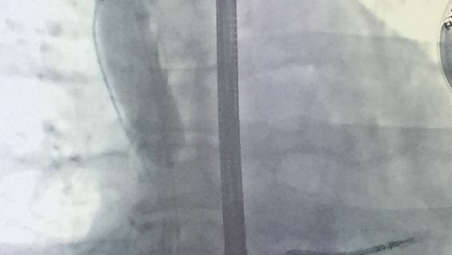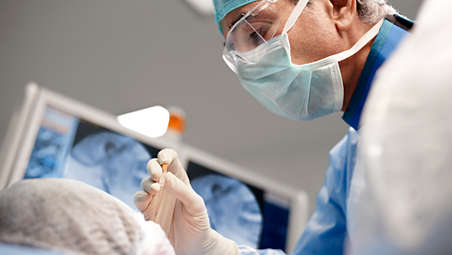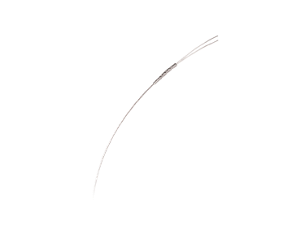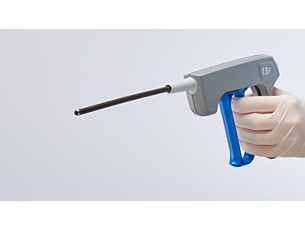Specifications
- Model number 590-001
-
Model number 590-001 Catheter length - 90 cm
Balloon diameter: (nominal) - 20 mm
Balloon length: (nominal) - 80 mm
Maximum OD: (crossing profile) - 4mm / 0.157”
Minimum tip ID - 0.9mm / 0.035”
Maximum inflation volume - 60 cc
-
- Model number 590-001
-
Model number 590-001 Catheter length - 90 cm
Balloon diameter: (nominal) - 20 mm
-
- Model number 590-001
-
Model number 590-001 Catheter length - 90 cm
Balloon diameter: (nominal) - 20 mm
Balloon length: (nominal) - 80 mm
Maximum OD: (crossing profile) - 4mm / 0.157”
Minimum tip ID - 0.9mm / 0.035”
Maximum inflation volume - 60 cc
-
- 1. Roger G. Carrillo, MD; Darren C. Tsang, BS; Ryan Azarrafiy, BA; Thomas A. Boyle, BS. Multi-Year Evaluation of Compliant Endovascular Balloon in Treating Superior Vena Cava Tears During Transvenous Lead Extraction. EHRA late-breaking trial, March 19, 2018.
- 2. Document on file D027562. Bridge can be fully deployed in under one minute (53 seconds) in an animal model when pre-positioned on a guidewire, or in under two minutes (1 minute, 46 seconds) when not pre-positioned.
- 3. Document on file D027563. The balloon will cover the length and diameter of the SVC in 90% of the population as determined by analysis of 52 patients (N=52, % Male=48.1, Average Age 47.1 ± 16.5, Age Range 63 (18 to 81 years), Average Height 170.8cm ± 10.6, Height Range 40.6cm (152.4 to 193cm), Average BMI 29.8 ± 7.2, BMI Range 32.1 (18.2 to 50.3)).
- 4. Document on file D027561. When deployed, the Bridge occlusion balloon reduces blood loss by up to 90%, on average, in an animal model of an SVC tear. Testing was conducted in a heparinzed porcine model which has shorter SVC length than is typical in humans. A balloon design scaled for use specifically in the porcine model was used in generating this data.
- 5. Document on file, D026197. In an animal model with SVC tears up to 3.5 cm, with 2 pacing leads and 1 ICD lead.
- Product availability is subject to country regulatory clearance. Please contact your local sales representative to check the availability in your country.
- Bridge is distributed by LifeSystems in Australia and New Zealand.
- Always read the label and follow the directions for use.
- Philips medical devices should only be used by physicians and teams trained in interventional techniques, including training in the use of this device.
- Philips reserves the right to change product specifications without prior notification.
- ©2025 Koniklijke Philips N.V. All rights reserved. Trademarks are the property of Koninklijke Philips N.V. or their respective owners.







